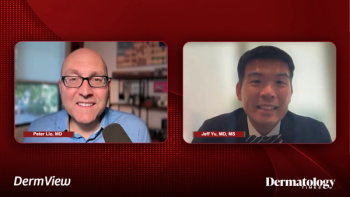
Efficacy Results From the Barzolvolimab Trial
An expert discusses how barzolvolimab demonstrated statistically significant and clinically meaningful reductions in UAS7 scores, with over 50% of patients achieving complete response and sustained disease control lasting 28 weeks after the final dose.
Episodes in this series

Video content above is prompted by the following:
The barzolvolimab phase 2 trial demonstrated impressive efficacy results, with the primary end point of mean change from baseline UAS7 at week 12 showing statistically significant and clinically meaningful reductions. Both the 150 mg every 4 weeks and 300 mg every 8 weeks dosing regimens achieved substantial improvements after just 2 injections. The clinical significance extends beyond statistical measures, with meaningful symptom reduction that translates to real-world patient benefit. Most remarkably, UAS7 improvements were sustained through week 76, even after 28 weeks without treatment, suggesting potential disease-modifying effects.
Complete response rates were particularly striking, with 38% of patients taking barzolvolimab 150 mg every 4 weeks and 51% taking 300 mg every 8 weeks achieving complete response (UAS7 = 0) at week 12. More than 35% of patients maintained complete response at week 76, 28 weeks after their final dose, demonstrating unprecedented durability of treatment effect. Well-controlled disease (UAS7 <6) was achieved in over 50% of patients and persisted through the 76-week assessment period.
Quality of life improvements paralleled clinical efficacy, with over 40% of patients achieving Dermatology Life Quality Index scores less than 1 at week 76, indicating no impact on quality of life. Importantly, similar improvements were observed in both omalizumab-naive and omalizumab-experienced patients, suggesting barzolvolimab's effectiveness across different patient populations. This finding is particularly significant for addressing unmet needs in patients who have failed standard biologic therapy, as the drug's mechanism of mast cell depletion works through different pathways than omalizumab's anti-IgE approach.
Newsletter
Like what you’re reading? Subscribe to Dermatology Times for weekly updates on therapies, innovations, and real-world practice tips.
















